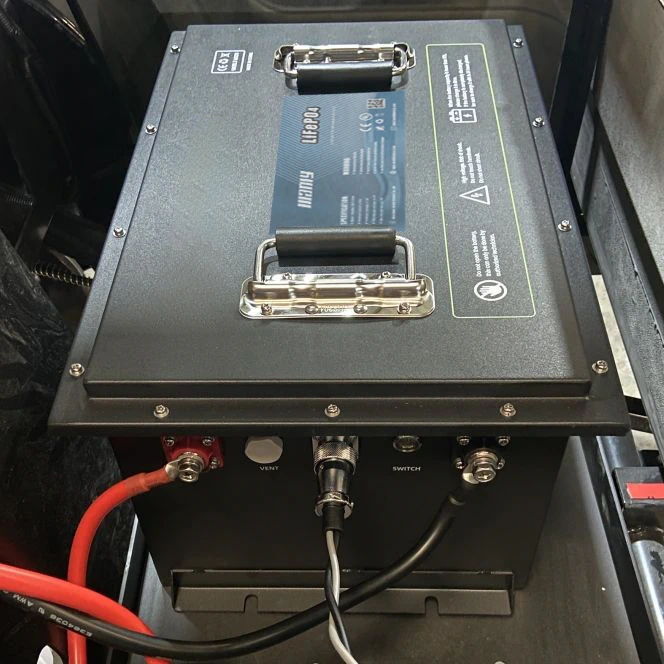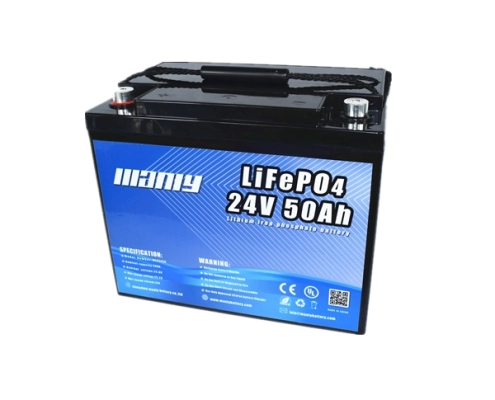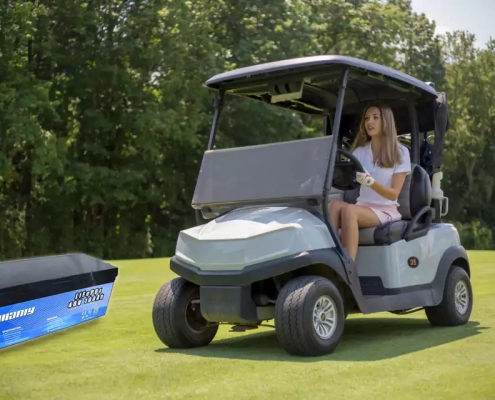2024 Transform Your Golf Cart with a Lithium Battery
Table of Contents
- 2024 Transform Your Golf Cart with a Lithium Battery
Upgrading to a lithium battery for golf cart is an intelligent decision for those seeking enhanced performance, reliability, and ease of maintenance. Unlike traditional lead-acid batteries, lithium batteries for golf carts offer consistent power, faster charging times, and a significantly longer lifespan. These benefits can drastically improve your golf cart’s functionality and reduce the need for frequent golf cart battery replacement. As you deliberate on this transition, you must grasp both the benefits and potential obstacles of converting your golf cart to lithium power.

Why Consider Lithium Battery for Golf Cart?
Switching to a lithium battery for golf cart is more than just a trend; it’s a smart choice for those who want better performance and less hassle. Traditional lead-acid batteries have been around for years, but they have several drawbacks that make them less ideal for today’s golf carts. Lithium batteries, on the other hand, offer numerous advantages that can significantly enhance your golfing experience.
Advantages Over Traditional Batteries
One of the main reasons to convert golf cart to lithium is the significant improvement in battery performance. Lithium batteries for golf carts are much lighter than their lead-acid counterparts. For example, traditional lead-acid batteries can weigh around 350 pounds, while lithium batteries might weigh just 150 pounds. This weight reduction makes the golf cart more straightforward to maneuver and frees up space that can be used for other purposes.
Regarding energy efficiency, lithium batteries for golf carts maintain a consistent power output level throughout their charge cycle. This means your golf cart will perform at its best, even when the battery is not fully charged. In contrast, lead-acid batteries lose power as they discharge, making your cart sluggish, especially on hilly terrain.
Moreover, the transition from lead-acid to lithium batteries can lead to significantly faster charging times. Lithium batteries can charge approximately five times faster than lead-acid batteries, providing efficient and rapid charging for your golf cart and ensuring it is always available for immediate use. They also boast a longer lifespan, reducing the frequency of battery replacements, which can be time-consuming and costly.
Common Issues and Problems in Golf Cart Lithium Conversion
While the benefits of switching to lithium batteries for golf carts are numerous, there are also some potential issues that you should be aware of. One common problem is ensuring that the lithium batteries’ voltage matches your golf cart’s requirements. Golf carts typically run on 36 or 48 volts, so it’s crucial to select a lithium battery that matches the voltage specifications of your specific golf cart model.
Another area for improvement is whether your existing charger is compatible with the new lithium batteries. Many lead-acid battery chargers are unsuitable for lithium batteries, as they need to need to provide the correct voltage or charging profile. Using the wrong charger can damage your lithium batteries and shorten their lifespan.
Finally, it is crucial to consider that although lithium batteries offer higher efficiency, they are more susceptible to extreme temperatures. Lithium batteries have superior efficiency but are highly sensitive to temperature extremes. High heat or freezing conditions can markedly affect their performance and longevity. Therefore, storing and using your golf cart in suitable environments is crucial to ensure the best performance and lifespan of your lithium batteries.
Selecting the Optimal Lithium Battery for Your Golf Cart
Matching Voltage and Capacity Requirements
When choosing a lithium battery for a golf cart, selecting the right one is essential to ensure peak performance and long-term durability. The first step in this process is to match the battery’s voltage with the requirements of your golf cart. Most golf carts operate on either 36 volts or 48 volts, so you need to choose a golf cart lithium battery that meets these specifications.
For example, if your golf cart runs on 48 volts, select a 48-volt lithium battery or connect multiple lower-voltage batteries in series to achieve the required voltage. Mismatching the voltage can lead to poor performance or damage to your golf cart’s electrical system.
Beyond voltage, you should consider the battery’s capacity, typically measured in amp-hours (Ah). Capacity determines how long your golf cart can run before needing a recharge. If you use your golf cart often for extended periods, consider a higher-capacity battery for enhanced performance and longevity. For instance, a 100 Ah battery will last longer than a 50 Ah battery before recharging. When installing golf cart batteries, balancing capacity with the available space and the weight the golf cart can handle is essential.
Selecting the Best Replacement Batteries for Golf Cart
When you’re replacing golf cart batteries, you’ll need to make sure the new lithium batteries fit your specific model. The best replacement batteries for golf carts offer a “drop-in” installation, meaning they fit into your existing battery compartment without requiring any modifications. This can simplify the conversion process and reduce the likelihood of installation issues.
The new batteries should fit correctly and be compatible with your golf cart’s existing wiring and connections. If you are uncertain about which battery to select, it is recommended that you seek advice from a qualified professional or consult the manufacturer’s specifications for your golf cart. Companies like MANLY Battery offer lithium batteries designed to replace traditional lead-acid batteries in golf carts, ensuring a seamless upgrade process.
Also, please take a look at the lithium battery chemistry type that works best for you. Lithium Iron Phosphate (LiFePO4) batteries are famous for golf carts due to their stability, long cycle life, and safety features. These batteries are less likely to overheat and are generally safer for use in various environmental conditions.
How to Hook Up Golf Cart Batteries: A Detailed Guide
Once you’ve chosen the right golf cart lithium battery, the next step is installation. Properly installing golf cart batteries is critical for ensuring they perform optimally and last as long as possible. Below is a detailed guide to help you through the process.
Preparing for the Conversion Process
BeforeBefore replacing the golf cart batteries with lithium ones, it is crucial to prepare the golf cart to install the new batteries properly. Start by disconnecting the old batteries. For safety purposes, it is essential to ensure that the golf cart is powered off and the key is removed to avoid unintentional activation of the power system. When disconnecting the battery, always remove the negative terminal before disconnecting the positive terminal. This reduces the risk of short-circuiting.
After removing the old batteries, thoroughly clean the battery compartment to remove dirt, corrosion, or debris. The cables and connectors should not show signs of wear or damage, as these can impact the performance of the new batteries. If any components are damaged, replace them before proceeding with the installation.
Finally, check that all the components of your new lithium battery system are compatible with your golf cart. This includes the charger, wiring, and any additional hardware, such as mounting brackets or busbars, that might be required.
Step-by-Step Installation of Lithium Batteries for Golf Carts
Now that your golf cart is prepared, you can begin the installation of the new golf cart lithium battery. Follow these steps to ensure a smooth and safe installation:
- Position the Batteries: Place the lithium batteries into the battery compartment. Please make sure they are secure and properly aligned. If your lithium batteries are “drop-in” ready, they should fit without needing any modifications to the compartment.
- Connect the Batteries: Start by connecting the batteries in series or parallel, depending on your golf cart’s voltage requirements. When connecting multiple batteries in series, it’s crucial to ensure that the positive terminal of one battery is connected to the negative terminal of the next battery. This connection sequence should be continued until all the batteries are correctly linked. For parallel connections, connect all positive and negative terminals together.
- Wiring and Connections: Attach the main cables to the battery terminals once the batteries are connected. Always connect the positive cables first, followed by the negative ones. Ensure that all electrical connections are properly fastened and secure to prevent any potential electrical malfunctions.
- Install the Charging System: If your new lithium batteries require a charger different from your old lead-acid batteries, install the new charger according to the manufacturer’s instructions. It is essential to verify that the charger you are using is suitable for your lithium batteries to prevent overcharging or causing damage to the batteries.
- Final Checks: Before powering up your golf cart, double-check all connections and ensure everything is securely in place. Once you’re confident that the installation is correct, please turn on your golf cart and test the new battery system to ensure it’s working correctly.
By following these steps, you can complete the conversion to a golf cart lithium battery and enjoy enhanced performance, faster charging, and longer battery life.
Conversion Costs and Long-Term Benefits
Understanding the Cost of Lithium Conversion
Converting your golf cart to use a lithium battery for golf cart involves some upfront costs, but the long-term benefits often justify the investment. The cost of replacing golf cart batteries with lithium options can range from $1,000 to $3,500 or more, depending on the type of batteries you choose and whether you hire a professional for the installation.
The initial cost includes the price of the golf cart lithium battery itself and any necessary accessories like battery trays, busbars, and wiring. If your existing charger isn’t compatible with lithium batteries, you’ll also need to purchase a new one. While these costs can add up, it’s essential to consider the long-term savings and performance improvements that lithium batteries provide.
With proper care, lithium batteries typically last much longer than lead-acid batteries, often up to 10 years or more. This longevity reduces the need for frequent golf cart battery replacement, saving you money over time. Lithium batteries also require little to no maintenance, reducing ongoing costs compared to the regular upkeep that lead-acid batteries demand.
Long-Term Maintenance and Care for Lithium Batteries
One of the most significant advantages of changing golf cart batteries to lithium is the reduced maintenance required. Lithium batteries are virtually maintenance-free, unlike lead-acid batteries, which need regular watering and cleaning. This indicates that you will be able to devote additional time to enjoying your golf cart and less time to being concerned about maintaining the battery.
To ensure optimal longevity for your lithium batteries in golf carts, it’s crucial to adhere to specific care guidelines. First, always use a charger that is compatible with your lithium batteries. Overcharging or using an incompatible charger can shorten the battery’s lifespan or cause damage.
Second, store your golf cart and its batteries in a cool, dry place when not in use. It’s crucial to shield lithium batteries from extreme temperatures to maintain their performance and extend their lifespan. Extreme temperatures, whether high heat or freezing conditions, can have a substantial effect on their operational capabilities and lifespan.
Lastly, although lithium batteries are low-maintenance, it’s still a good idea to monitor their performance periodically. Many modern lithium batteries have built-in monitoring systems that allow you to check the battery’s health and charge level via a smartphone app. This feature can help you catch potential issues early and ensure your batteries are always in top condition.
Overcoming Common Golf Cart Lithium Conversion Issues
While golf cart lithium battery conversion benefits are clear, some challenges can arise during the process. Understanding these common issues and knowing how to address them can help ensure a successful and smooth conversion.
Troubleshooting and Solutions
One common issue is the mismatch between the golf cart’s electrical system and the new lithium batteries. As mentioned earlier, it’s crucial to ensure that the voltage and capacity of your new lithium battery for golf cart align with your cart’s requirements. If your golf cart is not performing as expected after the conversion, double-check the connections and voltage settings to ensure everything is configured correctly.
Another potential problem is with the charger. Many lead-acid chargers are unsuitable for lithium batteries, requiring a specific charging profile. If your new lithium batteries are not charging correctly or taking too long, it may be due to an incompatible charger. In this case, you’ll need to replace the charger with one designed for lithium batteries.
Some users also face temperature sensitivity issues. Lithium batteries exhibit greater temperature sensitivity compared to lead-acid batteries. Consequently, golf cart users in extremely hot or cold climates may experience diminished battery performance. To mitigate this, store your cart in a temperature-controlled environment when not in use and avoid operating the cart in extreme conditions whenever possible.
Ensuring Longevity and Performance
To ensure the longevity and optimal performance of your golf cart lithium battery, follow a few key practices. First, avoid deep discharges whenever possible. While lithium batteries are more tolerant of deep discharges than lead-acid batteries, regularly draining the battery to near zero can reduce its lifespan. Aim to recharge your batteries when they reach around 20-30% of their capacity.
Ensure to periodically monitor the battery’s health by leveraging the monitoring capabilities available in most lithium batteries. These features enable real-time tracking of critical performance metrics including charge level, temperature, and overall health. These tools can help you catch any issues early and maintain your battery in top condition.
Finally, be mindful of how you store and charge your batteries. For example, avoid leaving the battery fully charged for extended periods if you don’t plan to use the golf cart for a while. Instead, store the battery at a partial charge and recharge it thoroughly before use.
By following these best practices, you can maximize the lifespan and performance of your lithium batteries for golf carts, ensuring that your investment continues to pay off for years.
Final Thoughts
Switching to a lithium battery for a golf cart constitutes a prudent investment that yields a multitude of advantages, such as enhanced performance and decreased maintenance requirements. While the initial cost can be higher than sticking with traditional lead-acid batteries, the long-term savings and enhanced user experience make it a worthwhile upgrade.
By carefully selecting the right golf cart lithium battery, following proper installation procedures, and maintaining your batteries according to best practices, you can enjoy all the advantages lithium technology offers. Whether you’re looking for a more extended range, faster charging, or a more reliable power source for your golf cart, lithium batteries provide a modern solution that can significantly enhance your golfing experience.





